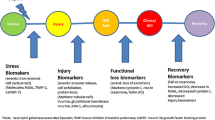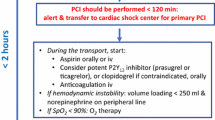Abstract
Surgery of the abdominal aorta generates a systemic inflammatory response (SIR), a source of operative morbidity-mortality. In the present work we attempted to evaluate the evolution of SIR in an experimental model that simulates elective and urgent surgery on the abdominal aorta. Fifteen mini-pigs divided into three groups were used. The animals were subjected to suprarenal aortic/iliac clamping and bypass with a Dacron-collagen prosthetic graft. Groups were as follows: (1) sham (only aortic dissection); (2) clamping and bypass; (3) hemorrhage of 40%, pre-clamping, and bypass. Determinations included (1) tumor necrosis factor-alpha (TNF-α) interleukin (IL)-1β, IL-6, IL-10, interferon-gamma; (2) myeloperoxidase (MPO), superoxide anion (SOA), superoxide dismutase (SOD), and malondialdehyde (MDA); (3) nitrites; (4) iNOS, (5) cell adhesion molecules (ICAM-1, VCAM-1) at 24 hours, 48 hours, and on day 7; and (6) NFκB at 48 hours. Our results point to an increase in all inflammatory variables, corroborated by their molecular regulators such as the expression of CAMs, iNOS, and NFκB. The alterations tended to normalize by day 7, after reperfusion. The results point to the great importance of SIR at all levels (molecular, nuclear, cellular, and systemic) in situations such as elective and urgent abdominal aorta surgery and the role that control of this response could represent for the future of vascular surgery.





Similar content being viewed by others
References
Alkharfy KM, Kellum JA, Matzke GR. Unintended immunomodulation: Part I. Effect of common clinical conditions on cytokine biosynthesis. Shock 2000;13:333–345
Sayers RD. Aortic aneurysms, inflammatory pathways and nitric oxide. Ann. R. Coll. Surg. Engl. 2002;84:239–246
Alkharfy KM, Kellum JA, Matzke GR. Unintended immunomodulation: Part II. Effect of pharmacological agents on cytokine activity. Shock 2000;13:346–360
Bown MJ, Nicholson ML, Bell R, et al. Cytokines and inflammatory pathways in the pathogenesis of multiple organ failure following abdominal aortic aneurysm repair. Eur. J. Vasc. Surg. 2001;22:485–495
Swartbol P, Truedsson L, Norgren L. The inflammatory response and its consequence for the clinical outcome following aortic aneurysm repair. Eur. J. Vasc. Endovasc. Surg. 2001;21:393–400
Zatelli A, Bonfanti U, Santilli R, et al. Echo-assisted percutaneous renal biopsy in dogs. A retrospective study of 229 cases. Vet. J. 2003;166:257–264
Lozano FS, Garcia-Criado FJ, Fresnadillo MJ, et al. Systemic inflammatory response induced by Dacron and modulation by antimicrobial agents: experimental study. J. Surg. Res. 2002;107:7–13
Garcia-Criado FJ, Eleno N, Santos F, et al. Protective effect of exogenous nitric oxide on the renal function and inflammatory response in a model of ischemia-reperfusion. Transplantation 1998;66:982–990
Ernst CB. Abdominal aortic aneurysm. N. Engl. J. Med. 1993;328:l167–1172
Katz DJ, Stanley JC, Zelenock GB. Operative mortality rate for intact and ruptured abdominal aortic aneurisms in Michigan: an eleven year statewide experience. J. Vasc. Surg. 1994;19:804–815
Swartbol P, Norgren L, Albrechtsson U, et al. Biological responses differ considerably between endovascular and conventional aortic aneurysms surgery. Eur. J. Vasc. Endovasc. Surg. 1996;12:18–25
Thompson MM, Nasim A, Sayers RD, et al. Oxygen free radical and cytokine generation during endovascular and conventional aneurysm repair. Eur. J. Vasc. Endovasc. Surg. 1996;12:70–75
Galle D, De Maertelaer V, Motte S, et al. Early inflammatory response after elective abdominal aortic aneurysm repair: a comparison between endovascular procedures and conventional surgery. J. Vasc. Surg. 2000;32:234–246
Odergard A, Lundbom J, Myhre HO, et al. The inflammatory response following treatment of abdominal aortic aneurysms: a comparison between open surgery and endovascular repair. Eur. J. Vasc. Endovasc. Surg. 2000;19:536–544
Lau LL, Halliday MI, Smye MG, et al. Extraperitoneal approach reduces intestinal and renal dysfunction in elective abdominal aortic aneurysm repair. Int. Angiol. 2001;20:282–287
Fiane AE, Videm V, Lingaas PS, et al. Mechanism of complement activation and its role in the inflammatory response after thoracoabdominal aortic aneurysm repair. Circulation 2003;108:849–856
Roumen RM, Hendriks T, van der Ven-Jongekrijg J, et al. Cytokine patterns in patients after major vascular surgery, hemorrhagic shock and severe blunt trauma. Relation with subsequent adult respiratory distress syndrome and multiple organ failure. Ann. Surg. 1993;218:769–776
Froon AH, Greve JW, Van der Linden CJ, et al. Increased concentrations of cytokines and adhesion molecule patients after repair of abdominal aortic aneurysm. Eur. J. Surg. 1996;162:287–296
Lindsay T, Lou X, Lehotay D, et al. Ruptured abdominal aortic aneurysm, a “two-hit” ischemia/reperfusion injury: evidence from an analysis of oxidative products. J. Vase. Surg. 1999;30:219–228
Adam D, Lee AJ, Bradbury AW, et al. Elevated levels of soluble tumor necrosis factor receptors are associated with increased mortality rates in patients who undergo operation for ruptured abdominal aortic aneurysm. J. Vasc. Surg. 2000;31:514–519
Lee WA, Hirneise CM, Tayyarah M, et al. Impact of endovascular repair on early outcomes of ruptured abdominal aortic aneurysms. J. Vasc. Surg. 2004;40:211–215
Barry MC, Kelly C, Burke P, et al. Immunological and physiological responses to aortic surgery: effect of reperfusion on neutrophil and monocyte activation and pulmonary function. Br. J. Surg. 1997;84:513–519
Barry MC, Wang JH, Nelly CJ, et al. Plasma factors augment neutrophil and endothelial cell activation during aortic surgery. Eur. J. Vasc. Endovasc. Surg. 1997;13:381–387
Holmberg A, Bergqvist D, Westman B, et al. Cytokine and fibrinogen response in patients undergoing open abdominal aortic aneurysm surgery. Eur. J. Vasc. Surg. 1999;17:294–300
Holzheimer RG, Gross J, Schein M. Pro and anti-inflammatory cytokine response in abdominal aortic aneurysm repair: a clinical model of ischemia-reperfusion. Shock 1999;1:305–310
Adembri C, Kastamoniti E, Bertolozzi L, et al. Pulmonary injury follows systemic inflammatory reaction in infrarenal aortic surgery. Crit. Care Med. 2004;32:1170–1177
Jedynak M, Siemiatkowski A, Gacho M, et al. Serum concentrations of MCP-1 and RANTES in patients due aortic surgery: the relationship with ischemia-reperfusion. Arch Immunol Ther. Exp. (Warsz) 2004;53:201–207
Paterson IS, Smith FC, Tsang GM, et al. Reperfusion plasma contains a neutrophil activator. Ann. Vasc. Surg. 1993;7:68–75
Tassiopoulos A, Carlin R, Gao Y, et al. Role of nitric oxide and tumor necrosis factor on lung injury caused by ischemia/reperfusion of the lower extremities. J. Vasc. Surg. 1997;26:647–656
Pararajasingam R, Weight SC, Bell PR, et al. Endogenous renal nitric oxide metabolism following experimental infrarenal aortic cross clamp induced ischemia reperfusion injury. Br. J. Surg. 1999;86:795–799
Pararajasingam R, Weight SC, Bell PR, et al. Pulmonary nitric oxide metabolism following infrarenal aortic cross-clamp-induced ischaemia-reperfusion injury. Eur. J. Vasc. Endovasc. Surg. 2000;19:47–51
Sirham M, Moochhala SM, Kerwin SY, et al. Influence of selective nitric oxide synthetase inhibitor for treatment of refractory haemorrhagic shock. Resucitation 2004;61:221–229
Harkin DW, Rubin BB, Romaschin A, et al. Selective inducible nitric oxide synthase (iNOS) inhibition attenuates remote acute lung injury in a model of ruptured abdominal aortic aneurysm. J. Surg. Res. 2004;120:230–241
Albelda SM, Smith CW, Ward PA. Adhesion molecules and inflammatory injury. FASEB J. 1994;8:504–512
Takada M, Nadeau KC, Shaw GD, et al. The cytokuine-adhesion molecule cascade in ischaemia/reperfusion injury of the rat kidney. Inhibition by soluble P-selectin ligand. J. Clin. Invest. 1997;99:2682–2690
Weight SC, Bell PRF, Nicholson ML. Renal ischaemia-reperfusion injury. Br. J. Surg. 1996;83:162–170
Foulds S, Galustian C, Mansfield AO, et al. Transcription factor NF kappa B expression and postsurgical organ dysfuncion. Ann. Surg. 2001;233:70–78
Kanwar S, Kubes P. Nitric oxide is antiadhesive molecule for leukocytes. New Horiz. 1995;3:93–104
Acknowledgement
This work was supported by the Institute de Salud Carlos III. Grant FISS 00/1093 from the Ministerio de Sanidad, Spain. Marcello B. Barros was sponsored by the Carolina Foundation, Madrid, Spain
Author information
Authors and Affiliations
Corresponding author
Rights and permissions
About this article
Cite this article
Lozano, F.S., Rodriguez, J.M., Garcia-Criado, F.J. et al. Postoperative Evolution of Inflammatory Response in a Model of Suprarenal Aortic Cross-clamping with and without Hemorrhagic Shock. Systemic and Local Reactions. World J. Surg. 29, 1248–1258 (2005). https://doi.org/10.1007/s00268-005-7877-y
Published:
Issue Date:
DOI: https://doi.org/10.1007/s00268-005-7877-y




